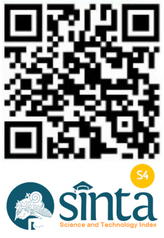OBIA AND BTM INTEGRATION FOR MAPPING HABITAT COMPLEXITY OF CORAL REEFS ON HARAPAN-KELAPA ISLANDS, KEPULAUAN SERIBU
Abstract
The habitat complexity is indirectly closely related to reef fish abundance. This study aims to map reefs habitat complexity by integrating object-based image analysis (OBIA) and habitat complexity analysis using benthic terrain modeler (BTM). The datasets used were SPOT-7 imagery and water depth derived from satellite imagery. The ground check was conducted to collect field data used as reference for classification and accuracy assessment of classification results. Classification of SPOT-7 imagery was performed using support vector machines (SVM) algorithm, by grouping shallow waters habitats into 4 classes on level 2 and 3 classes on level 3. Accuracy assessment was done by confusion matrix and resulting overall accuracy (OA) 83.55% for level 2 and 79.66% for level 3. The habitat complexity was analyzed using rugosity analysis method (Arc-Chord Ratio) from benthic terrain modeler (BTM) to obtain rugosity index in reefs area. The substrate covers were obtained from OBIA and complexity of habitats were obtained from BTM, then the overlay result shows varying rugosity index on the reef area in Harapan-Kelapa Islands.
Keywords:
coral reefs, OBIA, habitat complexity, rugosity






